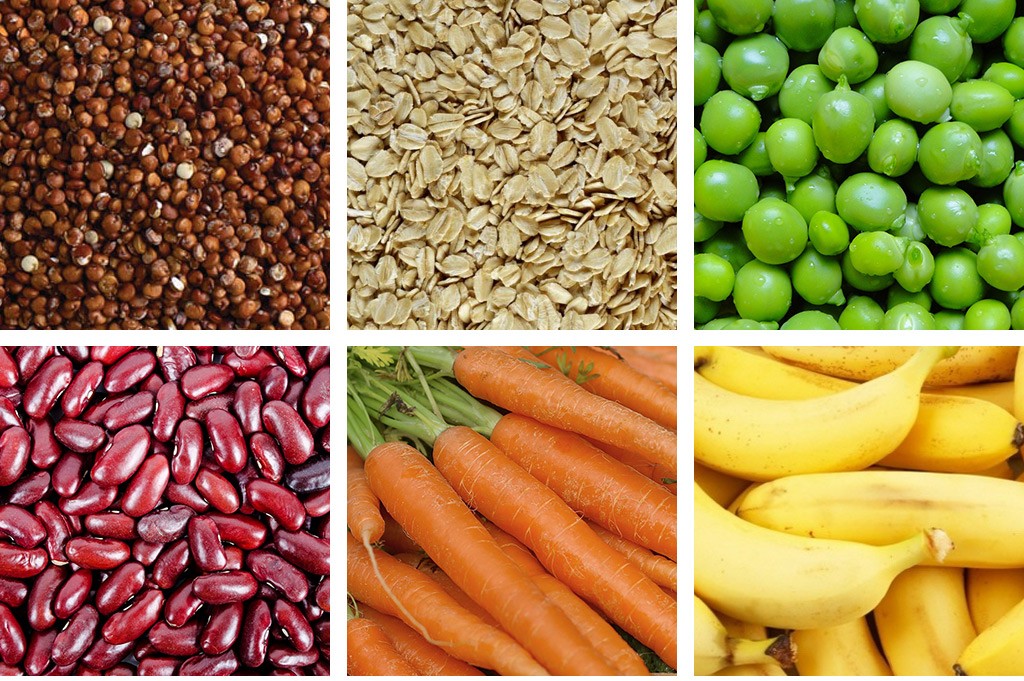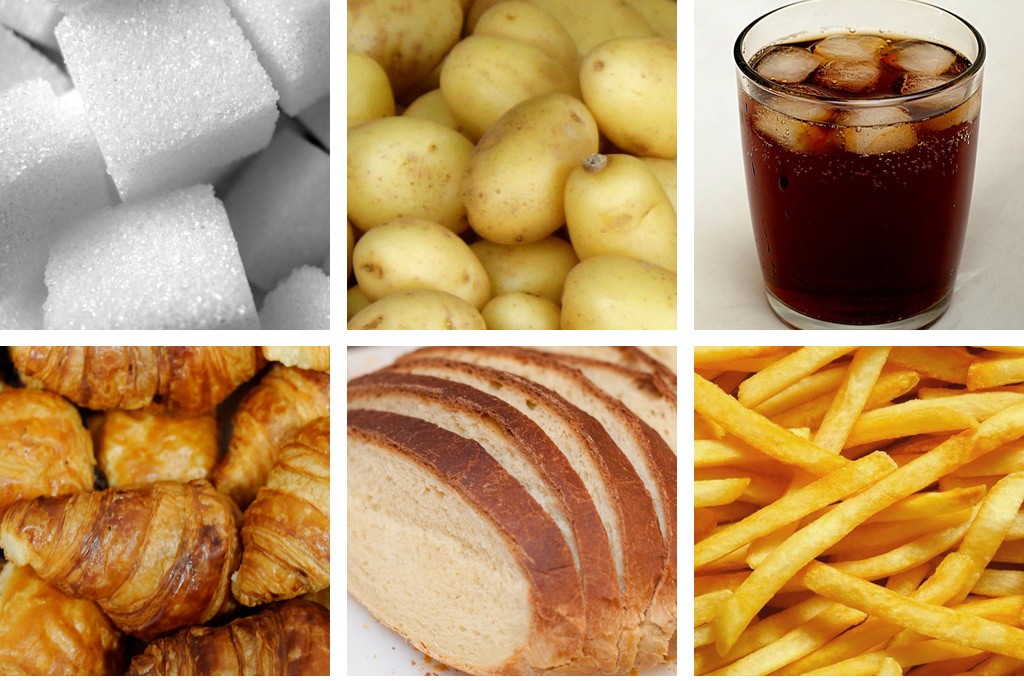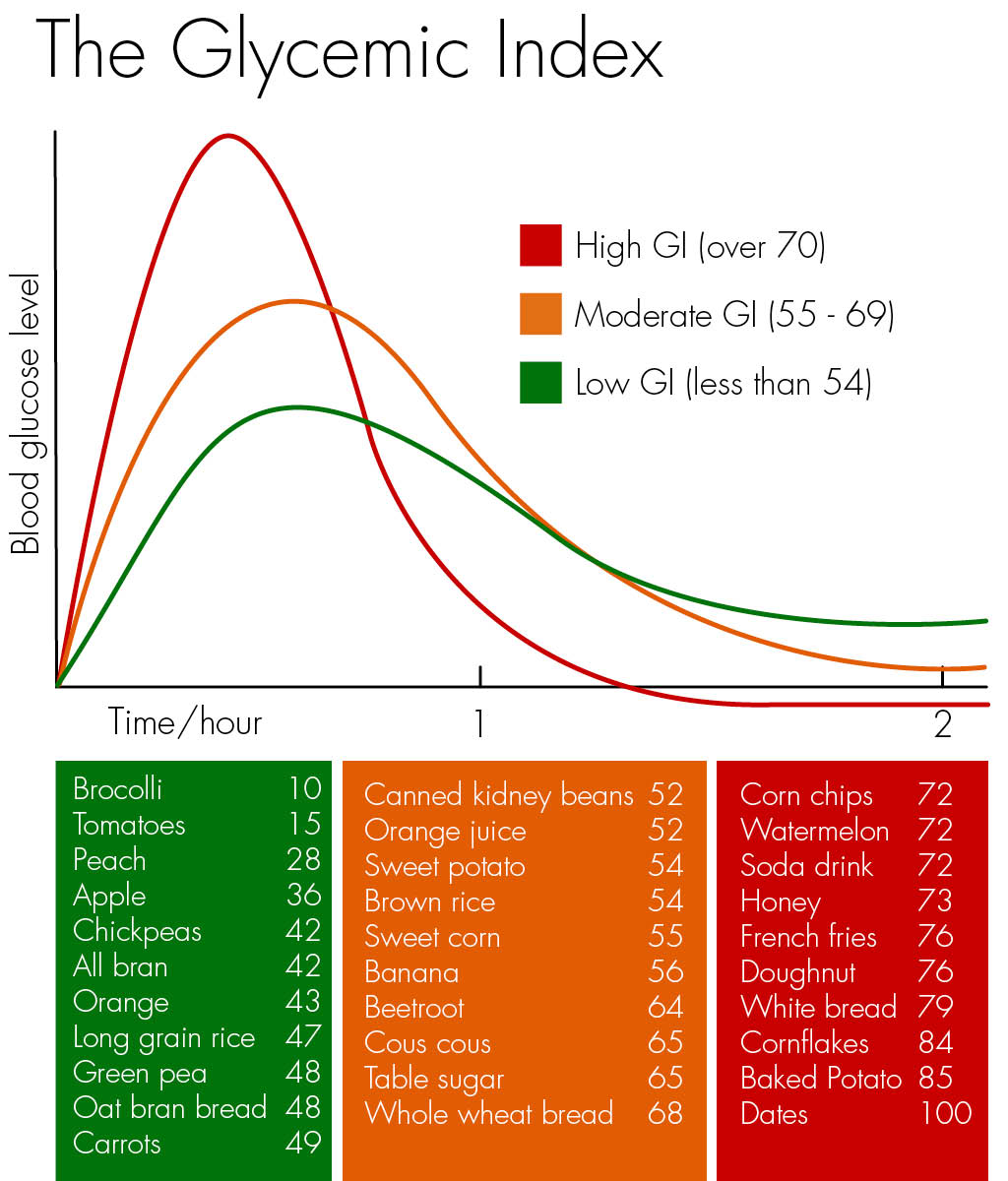Carbohydrates are one of the most important sources of energy for our bodies. These nutrients come in a variety of forms with the most common being sugars, starches and fibres. Sugar is the simplest form of carbohydrates and includes fruit sugar (fructose), table sugar (sucrose) and milk sugar (lactose). Starch is a complex carbohydrate, meaning it is made of many sugar units bonded together. Fibre is a mostly indigestible complex carbohydrate that only comes from plant foods.
The enzymes in our digestive juices convert the sugars and starches into a useable form called glucose. The glucose is then absorbed into your blood as blood sugar or blood glucose, and is delivered to your cells with the help of insulin. Cells then convert the glucose into ATP (or cell energy) which fuels your bodily functions like running, breathing and thinking. The process whereby cells turn glucose into energy is called glycolysis. The leftover glucose is stored in your liver, muscles and other cells for later use, however, if it is not used it turns into fat.
Carbohydrates can play a significant role when it comes to weight gain, but at the same time they are an important part of a healthy diet. Carbs are found in a wide variety of both healthy and unhealthy foods and beverages, so it’s important to understand which is which and to make an educated decision about what you put into your body. The truth is, when it comes to weight gain, it’s not so much about the amount of carbohydrate in your diet, but rather, the type of carbohydrate.
Most carbohydrates occur naturally in plant-based foods such as fruits and vegetables, nuts and seeds, legumes and whole grains. These are important carbohydrates to include in your diet as they provide essential vitamins, minerals, vital phytonutrients and of course, fibre. Fibre slows down the rate of digestion, which means the sugar that comes from our food is gradually released into the bloodstream, providing a steady supply of energy to the body.
 Examples of good carbs include whole grains like quinoa and oats, legumes, fruits and vegetables.
Examples of good carbs include whole grains like quinoa and oats, legumes, fruits and vegetables.
Processed and refined food has added carbohydrates in the form of starch or added sugar. White bread, pastries, chips, twinkies and soft drinks (you know the ones) are generally high in calories and low on nutrition. These foods contain easily digested carbohydrates, which means glucose is released quickly into the bloodstream, leading to sugar spikes, type 2 diabetes, heart disease, and weight gain.
 Examples of bad carbs include refined sugar, potatoes, sugary drinks, processed and refined flour products and fried foods.
Examples of bad carbs include refined sugar, potatoes, sugary drinks, processed and refined flour products and fried foods.
Evidence shows that eating plenty of fruits, vegetables, legumes and some whole grains can help you control your weight. Their bulk and fibre digests slower and helps you feel full on fewer calories. So choose your carbohydrates wisely.
It’s more important to eat carbohydrates from healthy foods than it is to follow a strict diet that involves limiting or counting the number of grams of carbs you eat. As always, wholefoods is best. Try limiting your intake of foods with added sugars and refined grains, such as sugary drinks, white breads and sweets, which are packed with calories but are low in nutrition. Rather introduce versatile and nutritious legumes into your diet, like beans and lentils. Legumes are generally low in fat, contain no cholesterol, and are high in folate, potassium, iron and magnesium. They also contain beneficial fats and soluble and insoluble fibre. Because they’re a good source of protein, legumes can be a healthy substitute for meat, which contains more saturated fat and cholesterol.
At Haleo we’ve exchanged old favourites like pasta for vegetable pasta (sweet potato noodles and ‘courgettie’). We’ve switched from doughy pizza bases to delicious cauliflower pizza bases, we’ve swapped white rice for cauliflower rice, and potatoes for sweet potatoes.
When it comes to weight-loss diets, a common measure used is the glycemic index (GI). This index maps out carbohydrate-containing foods according to their potential to raise your blood sugar level. The glycemic index was designed to help diabetics control their blood sugar levels. It’s recommend that we limit our intake of foods that are higher on the glycemic index (high GI foods), like potatoes, corn, and foods that contain refined flours and sugars. Foods that are lower on the glycemic index (low GI foods) are the naturally healthier options. These include things like whole grains, legumes, fruits and vegetables.
Note: The glycemic index is just a guide. Some foods that score low on the GI aren’t actually good for you. For example, saturated fat has no glycemic index so, when added to sugar or other carbs, it lowers their GI and makes them look good when in fact they are not. Ice cream has a great score on the glycemic index because of it’s saturated fat.
